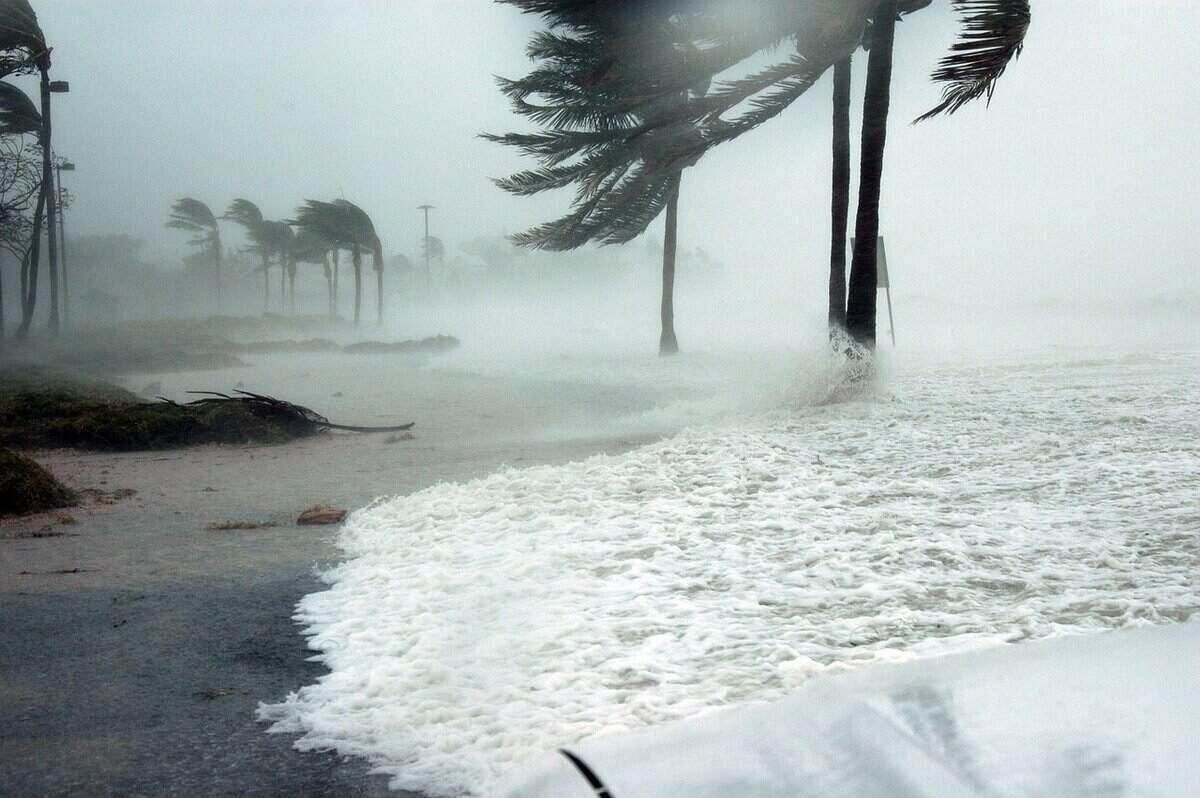
You can’t control a hurricane’s wrath, but you can control how you and your family prepare for the storm. And the sooner you prepare, the better. Scrambling hours before a hurricane and forgetting a vital safety measure is the last thing you want.
From stocking up on non-perishable food to planning your evacuation route, our hurricane preparedness guide details several ways you can help your family stay safe during these natural disasters.
The Atlantic hurricane season lasts from June 1st to November 30th, and the best time to prepare for it is now.
Weeks Before the Storm
1. Hurricane Watch vs. Hurricane Warning
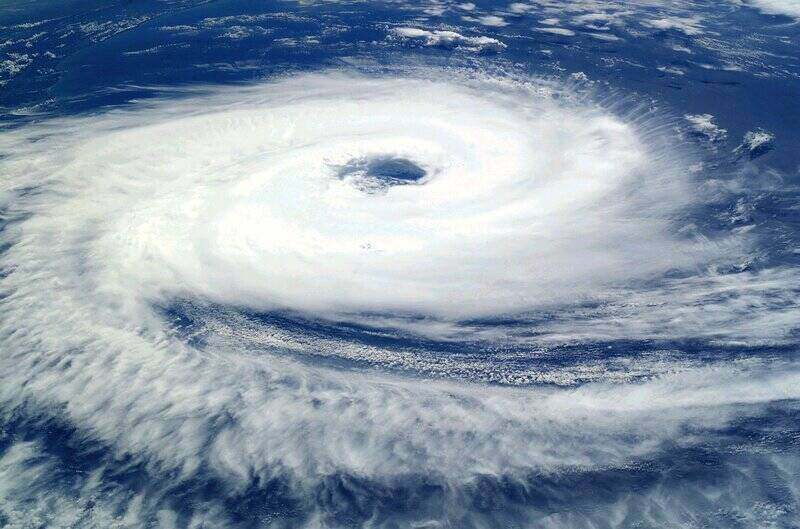
Before a hurricane is expected in your area, learn the difference between a hurricane watch and a hurricane warning. Both terms are important, but a hurricane warning is more serious:
- A hurricane watch means there’s no hurricane yet, but current weather conditions could cause one. Experts will issue a hurricane watch 48 hours before tropical-storm-force winds are expected to start.
- A hurricane warning means hurricane conditions are expected to occur somewhere within the specified area. Experts will issue a hurricane warning 36 hours before the anticipated onset of tropical-storm-force winds.
2. Prepare an Evacuation Plan
Long before experts anticipate a hurricane, develop an evacuation plan with your family. Here are some essential factors to consider with your loved ones:
- Decide on an evacuation destination, such as a friend or family member’s home. If a safe location is not available to you, listen to local officials for information about the nearest evacuation site or visit the American Red Cross to learn about emergency shelter options.
- Choose where to reunite: If your family becomes separated during the evacuation, decide where you will reunite.
- Know the evacuation route. Plan a second or third evacuation route if the first route is blocked.
- Avoid flooded areas: Tell all family members to avoid floodwaters during evacuation. Never swim, drive, or walk across a flooded area.
- Turn off/unplug appliances: Plan to turn off the gas, electricity, and water before evacuating. If there is time, unplug all appliances.
- Update phone contacts: Add important contact information to everyone’s cellphone or leave a list of phone numbers near the refrigerator.
- Come up with a backup evacuation plan(s): Develop an alternative evacuation plan in case your car becomes damaged during a storm. Decide whether you will take emergency public transport or phone a friend.
- Line up an evacuation ride: If you don’t have a car, learn about the public evacuation transport options available to you or plan a ride with a friend.
- No riding out the hurricane: Remind all family members never to ignore an evacuation order.
3. Protect Loved Ones with Medical Concerns
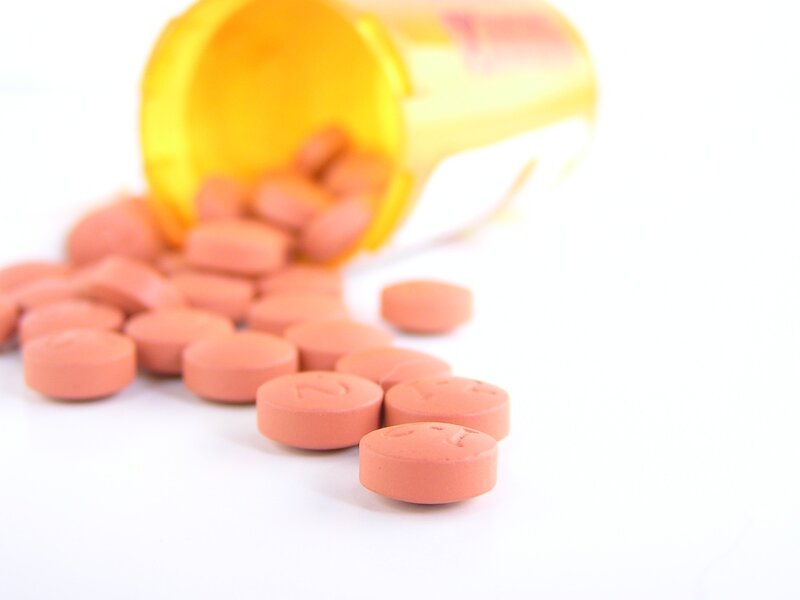
When preparing a hurricane plan with your family, remember to consider the needs of loved ones with medical concerns. If your loved one does not live with you, you can still play a critical role in developing their evacuation plan.
Many older adults, people with disabilities, and people with medical concerns may need help to evacuate safely. Their needs must be taken seriously, as chronic illnesses can worsen from exposure to stress, lack of food and water, and running out of medicine.
- Plan evacuation options: Call the hospital or public health department to discuss safe evacuation options for your loved one.
- Have necessary medications ready: Ensure your loved one has all the necessary medications before evacuating. You may need to take a trip to the pharmacy to refill prescriptions.
- Don’t leave service animals behind: If your loved one requires a service animal, they have the legal right to evacuate with their service animal.
4. Protect Your Pets
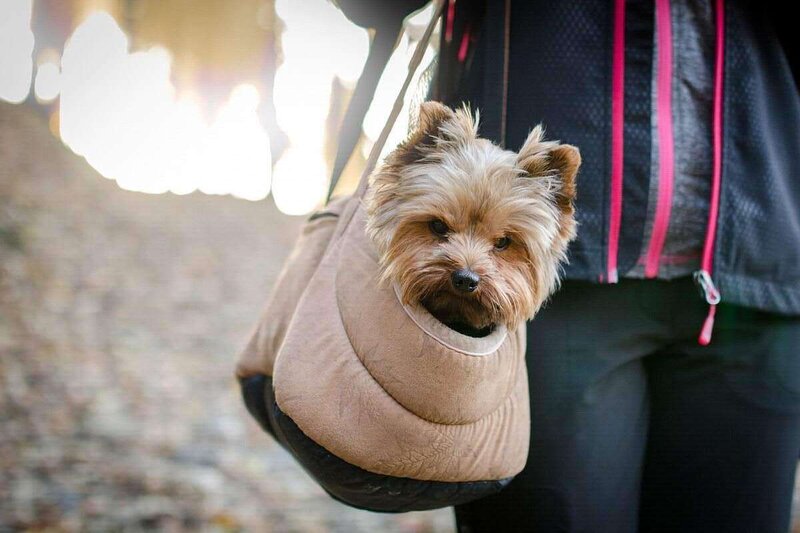
Include your pets in your disaster preparedness to help protect them from injury and death. Make an evacuation plan for all your pets, including cats, dogs, small animals (rabbits, hamsters, guinea pigs), and farm animals.
Here are some evacuation tips to keep in mind for your pet:
- Ensure all ID tags and collars are up to date.
- Never assume a shelter or hotel will accept pets. Call your evacuation site well in advance to confirm its pet policy or make arrangements with friends or family.
- Contact local animal shelters or animal control to learn more about evacuation options for your pet.
Remember: If you require a service animal, you have the legal right to evacuate with your service animal.
5. Stock Up on Emergency Supplies
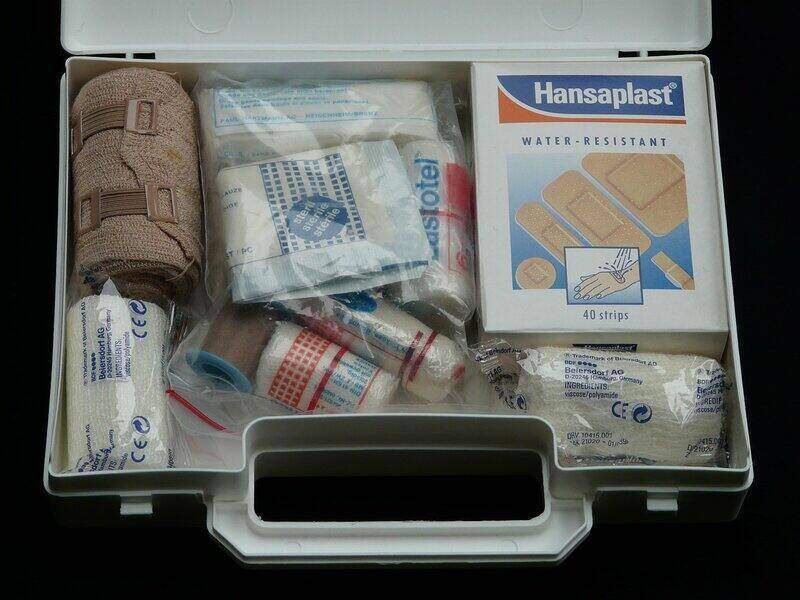
If you stay home during a hurricane, you’ll need to prepare your family with emergency supplies. You don’t know when you’ll next be able to travel safely to the store or whether your power will go out.
Include these items in your disaster supply kit:
- Bottled water: Tap water may not be safe to drink or use during a storm. The CDC recommends storing at least 1 gallon of water per day for each person and each pet. Store at least a three-day water supply, but a two-week supply is better. Store more water for people who are pregnant or ill.
- Non-perishable food: Store at least a three-day supply of non-perishable foods for people and pets (more is better).
- Can opener
- First aid kit
- Fire extinguisher (make sure your family knows where to find it and how to use it)
- Flashlights
- Hand sanitizer
- Soap
- Toothpaste
- Radio: battery-powered or hand crank (smartphone service may be unreliable)
- Extra batteries
- Extra blankets or sleeping bags
- Matches
- Candles (power may be out for days or even weeks after a hurricane or tropical storm)
- Tampons, pads, and other menstrual care items
- Diapers, baby wipes, and other baby care supplies
- Formula and baby food
- Essential medications
- Toilet paper
- Portable charger(s) for your electronic devices
Storage tips:
- Check food expiration dates.
- Avoid salty or spicy foods, as these foods may make you thirsty.
- Replace non-commercially bottled water every six months.
- Store water in a place with cool temperatures and out of direct sunlight.
- Do not store food or water near toxic substances.
- Store dry items in a waterproof container.
6. Prepare a “Go Bag”
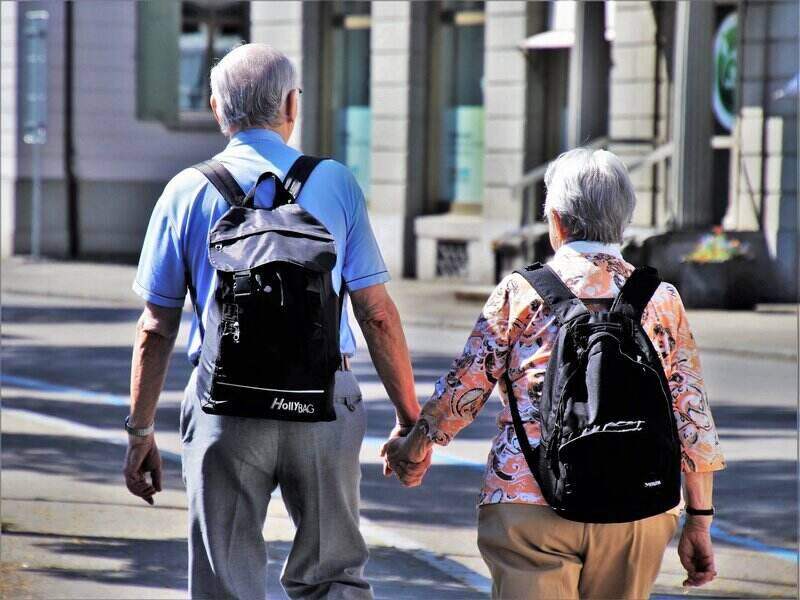
You likely won’t have time to transfer your emergency supply kit into bags when ordered to evacuate. Before the storm arrives, pack up your “go bag” (or bags) and have it ready to go at a moment’s notice.
A “go bag” contains the same items as your at-home supply kit plus a few additional items, which are in bold:
- Water and non-perishable foods to last a minimum of three days.
- Water and food for pets.
- Can opener
- First aid kit
- Fire extinguisher
- Flashlights
- Hand sanitizer
- Soap
- Toothpaste
- Battery-powered or hand crank radio
- Extra batteries
- Blankets or sleeping bags
- Matches
- Tampons, pads, and other menstrual care items
- Diapers, baby wipes, and other baby care supplies
- Formula and baby food
- Prescription medications
- Toilet paper
- Jumper cables
- Local maps
- Dust masks
- Essential pet supplies (if needed)
- Important documents, such as passports and financial information
- GPS – either the one in your car or on your cellphone
- Portable chargers for your devices
- Comfort items for children (such as a favorite toy or blanket)
- Roadside emergency kit, including a spare tire (you can keep this in the car)
- Cash and checkbook
- Whistle (to signal for help)
- Garbage bags
- Paper and pencil
- Paper cups, paper plates, paper towels, and plastic utensils
- Prescription glasses, contact lenses, and contact solution
- A deck of cards, books, or other activities for children
7. Practice Hurricane-Resistant Landscaping

Your home and family may be prepared for a hurricane, but how prepared is your yard? Whether you are designing a new landscape or want to improve on your existing one, here are a few ways you can make your landscape more hurricane-safe:
- Keep trees away from your home, power lines, and other vulnerable structures. A falling tree is less likely to damage structures or power lines that are far away. You may need to hire a certified arborist to remove or transplant a tree that’s too close.
- Keep your trees, hedges, and shrubs properly trimmed and pruned. High winds are more likely to snap off unhealthy, overgrown branches than healthy, trimmed branches.
- Consider installing salt-tolerant plants. High winds and crashing waves spray salt water into the air, harming your salt-intolerant plants.
- Choose wind-resistant trees: If you decide to plant trees, grow trees with high wind resistance.
- Grow trees in groups rather than spread out across your property. Groups of trees help create a wind buffer.
- When designing your landscape, keep paths to the storm drains clear. You don’t want a landscape feature to block the water’s path to the storm drain. Otherwise, areas of the yard may flood or form puddles.
8. Prevent Carbon Monoxide Poisoning
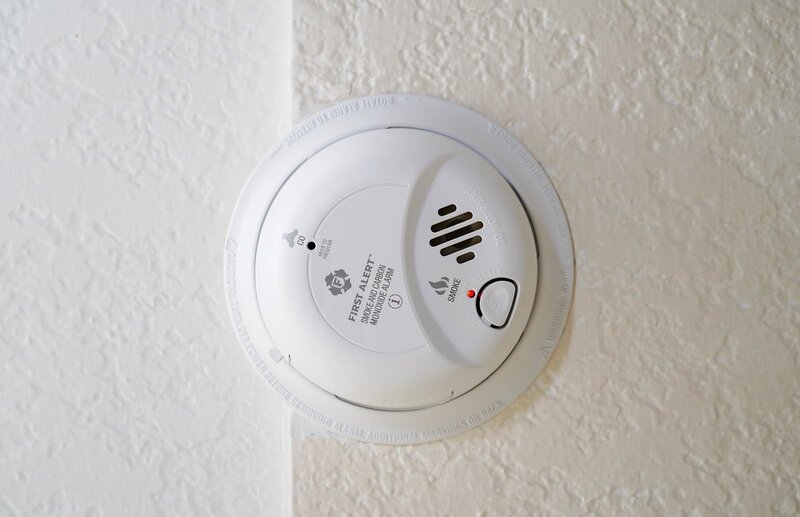
A natural disaster can lead to accidental carbon monoxide (CO) poisoning — but CO poisoning is preventable.
Here’s how:
When the power goes out during the hurricane, you should never use your camping stove indoors, warm up the car in the garage, or run your generator indoors. When fumes containing CO build up in an enclosed space, this will lead to CO poisoning.
Tips for preventing CO poisoning during a hurricane include:
- Remind all household members never to run the camping stove, generator, or other gasoline-powered engines that emit fumes indoors.
- Remind all household members never to burn charcoal inside or use the grill inside.
- Never warm up the car inside the garage.
- Call 911 if you suspect CO poisoning.
9. Have Your Roof Inspected
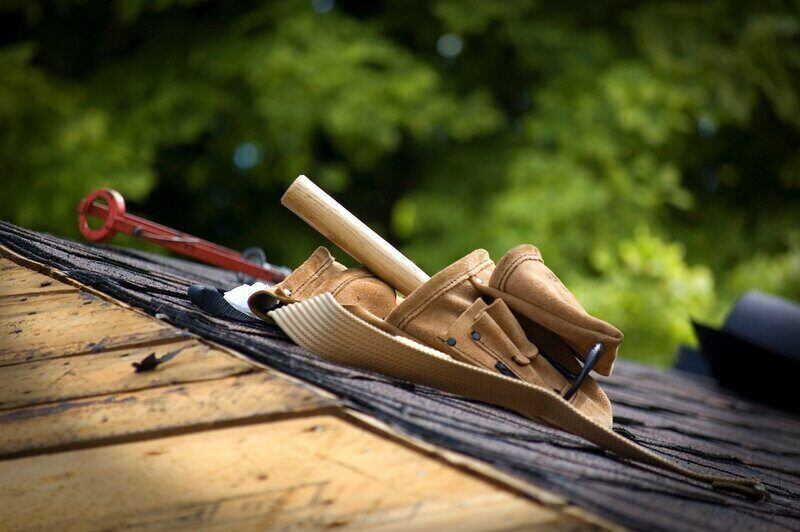
A tropical storm’s heavy rains can cause leaks in your roof, and high winds can swipe off your roof’s shingles. Avoid these headaches during severe weather by having your roof routinely inspected.
10. Have Your Trees Checked
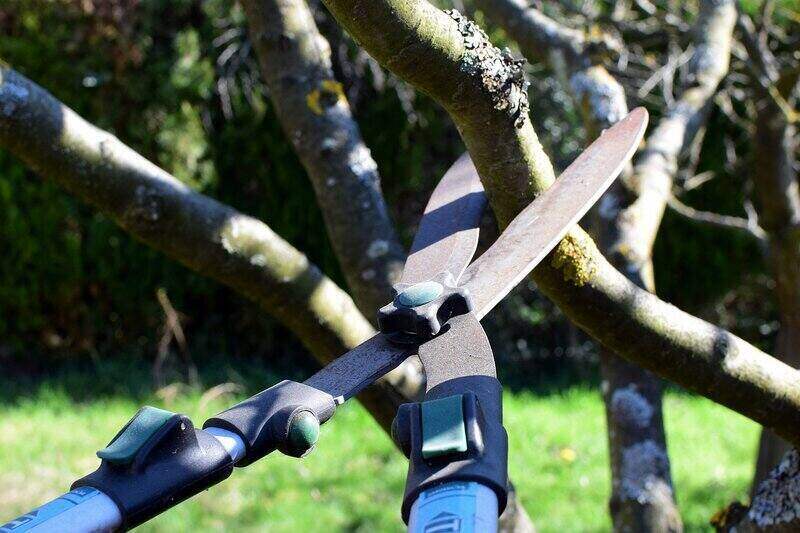
Just like you would have your roof inspected, you should have your trees checked, too. High winds will knock down a weak or dying tree with ease.
A tree crashing down on your roof may lead to injuries or heightened anxiety during a hurricane. Hire a certified arborist to inspect your trees routinely. Beware of self-proclaimed “tree-care professionals,” as they may not have the necessary knowledge or training to spot a weak tree.
11. Prepare for Tornadoes
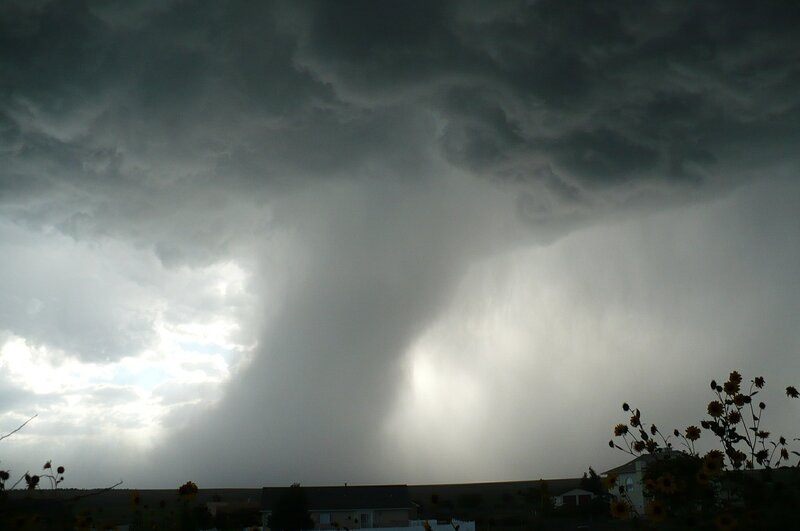
A hurricane’s high winds can create the perfect conditions for a tornado. You may not live in an area where tornadoes are common, but don’t be fooled –– tornadoes have been reported in all 50 states.
Prepare a tornado safety plan with your family and listen for any tornado warnings or tornado watches in your area.
12. Repair and Clean Gutters
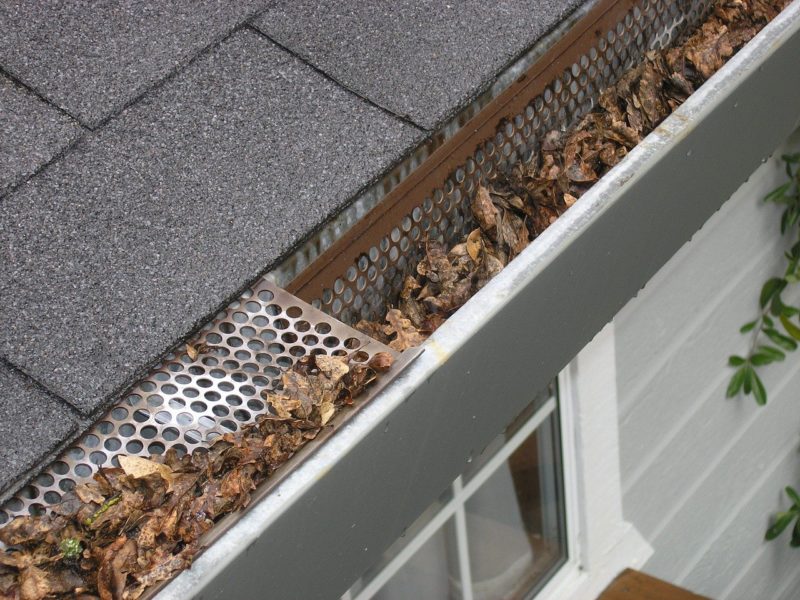
If your gutters are full of autumn leaves and plant debris, now is the time to clean them. Clogged gutters will overflow with water, which could result in water damage to your home.
Clean your gutters routinely and make any necessary repairs so that you’re not rushing to do this before a hurricane starts.
Don’t want to clean the gutters yourself? Find a professional gutter cleaning crew near you.
Days Before the Storm
1. Withdraw Cash
Before a hurricane strikes, visit the bank or an ATM to withdraw cash. If a hurricane wipes out the city’s power, ATMs and some credit card readers will not work.
2. Fill Up the Gas Tank
Fill your car’s gas tank when a hurricane is expected. If your city experiences a power outage, you won’t be able to pump gas.
3. Remove or Tie Down Outdoor Projectiles
Protect your car and windows by removing or tying down outdoor projectiles, such as bicycles, branches, grills, and garden benches.
And don’t forget to look up — coconuts, bananas, and palm seeds will go flying in a storm. Remove them before the storm rolls in.
4. Board up Windows and Glass Doors
A major hurricane’s winds, which can reach 157 mph or more, can sweep up projectiles and send them flying through your windows and glass doors. When your area is expecting a hurricane, board up your windows with plywood storm panels.
Here’s a helpful visual guide by Lowe’s showing how to install plywood storm panels :
Installing metal hurricane shutters is also an effective way to protect your glass:
5. Remove Your Window AC Unit
Remove your window AC unit before the storm arrives. Otherwise, high winds might send it flying.
6. Collect Important Documents
Always collect your essential documents and keep them safe throughout the storm, including your passports, birth certificates, ID, and financial records. If you need to evacuate, bring these documents with you.
Pro Tip: If you need to print documents, do so before the storm arrives and while you still have power.
7. Move Cars into the Garage
Your car is a valuable means of transport during an evacuation. If a hurricane damages your car, you’ll need to resort to your evacuation Plan B. Move your cars into the garage to protect them from flying debris and falling branches.
8. Stack Sandbags
If your home is vulnerable to floods or storm surges, build a wall with sandbags to deter or block the water. If you need to build a particularly tall barricade, stack the sandbags like bricks in a pyramid shape. The higher the wall, the thicker the pyramid’s base should be.
An alternative to sandbags is a self-inflating flood barrier system that inflates when it comes in contact with water. Pre-soak the barrier system before the storm arrives; otherwise, a flash flood may carry it away.
9. Prepare Cleaning Water
Your emergency kit should contain drinking water, but you’ll also need water for cleaning dishes, washing hands, and washing clothes during a hurricane. Fill your sinks and bathtubs with water before the storm arrives, and, if available, prepare your rain barrel to collect rainwater.
10. Refill Prescriptions
Head to the pharmacy to refill prescriptions. Remember to include these medications in your at-home supply kit and emergency “go bag.”
11. Entertainment
Waiting out a hurricane can be stressful. But nothing says you can’t have a little fun to boost everyone’s spirits, especially if you have small children you want to distract from the situation.
Before the hurricane arrives, consider how you can entertain your family without electricity (if the power goes out). You may need to rummage through the closet to find classic board games or have the family download a few movies before losing the internet.
When a Storm Looms
1. Watch the Forecast
When local officials are calling for a hurricane, pay attention to updates. The forecast may predict a major hurricane (Category 3 or higher), or you may receive an evacuation order. Always evacuate your family when you receive an evacuation order. Otherwise, you may face imminent danger.
You can monitor the forecast by watching the TV, listening to the radio, or checking the National Weather Service at weather.gov.
2. Charge all Your Devices
Laptops, tablets, cellphones — charge up all your devices before the storm, including your portable chargers.
You Can Never Overprepare for a Hurricane
Don’t wait to discuss your family’s hurricane disaster plan hours before the storm. The waning hours before a hurricane or tropical storm are precious, and you must use them wisely. It’s best to prepare your evacuation plan and emergency supply kits days (or months) before a storm arrives.
Other hurricane safety measures to prepare in advance include roof and tree inspections, gutter cleanings, hurricane-resistant landscaping, and tornado preparedness.
When a storm is anticipated in your area, use the valuable time to fill up your gas tank, withdraw cash, fill the bathtubs, remove projectiles, and board up windows.
More Hurricane Resources
Want to learn more about hurricanes and hurricane preparedness? Here are some valuable resources:
- Federal Emergency Management Agency (FEMA)
- National Hurricane Center
- National Weather Service
- National Oceanic and Atmospheric Administration (NOAA)
- Ready.gov
Hire a Pro and Save Valuable Time
If adopting hurricane-resistant landscape techniques is too much work or taking too much time, hire a local landscape professional to take the burden off your shoulders.
Let an expert handle some of the items on your hurricane prep to-do list while you stock your emergency kits, get your roof inspected, and fill your cupboards.
Main Photo Credit: Pixabay